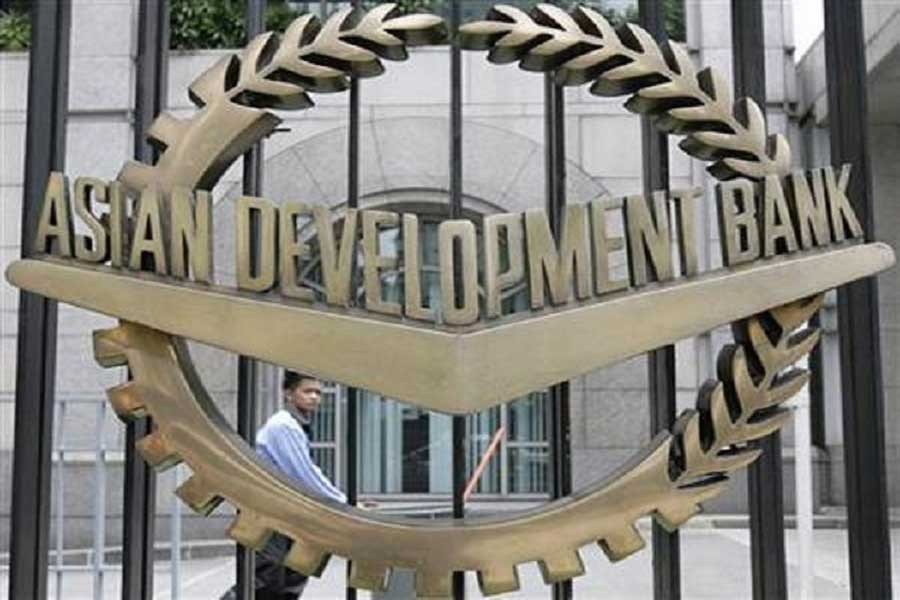The Asian Development Bank's (ADB's) loan to Bangladesh is going to be expensive in the coming years as it would provide nearly 86 per cent of its planned assistance from its hard window OCR, officials said Wednesday.
According to the ADB's proposal, it will provide nearly US$9.6 billion loan in next three years from 2018 to 2020.
Of the loans, 86 per cent or $8.26 billion will come from the non-concessional lending arm -- Ordinary Capital Resources (OCR).
The remaining 14 per cent or $1.36 billion is expected to come from the concessional loan providing arm -- the Concessional OCR Lending (COL).
The OCR is a market-based loan which depends on the LIBOR (London Inter-Bank Offered Rate).
According to the sources, the loan from OCR is charged interest based on the 6-month US$ LIBOR rate plus 500 basis points.
It also charges 0.15 per cent commitment fee on undisbursed amount and 0.15 per cent maturity premium for the loans.
The repayment period of the loans is also shorter than that of other donors like the World Bank and Japan.
The OCR loan is payable in 25 to 30 years with five years' grace period.
On the other hand, the interest rate for the COL loan is fixed at 2.0 per cent. Its maturity is 25 years with five-year grace period. There is no commitment fee or maturity premium applicable for this loan.
On August 14 this year, the six-month US$ LIBOR rate was 1.45 per cent. The LIBOR rate is flexible.
A senior official of the Economic Relations Division (ERD) said a few years back, the Manila-based lender was providing more concessional loan (ADF) than its non-concessional one (OCR). But it has been reversed in recent years, he added.
"Currently LIBOR rate is hovering at below 2.0 per cent rate. If the LIBOR increases in any time during the long repayment period of any ADB loans, we have to repay on that high rate. Everybody knows that the LIBOR rate jumped to 5.75 per cent in 2006-07 period," the official pointed out.
So, borrowing of the OCR loan from the ADB is risky for any country, he told the FE.
The country's largest multilateral donor World Bank charges 0.75 per cent interest rate for its loan to Bangladesh with 38 years of repayment period offering eight-year grace period.
Meanwhile, the largest bilateral development partner Japan charges 0.01 to 0.70 per cent interest rates on its loan for Bangladesh. The loan is payable in 30 years with a grace period of 10 years.
The ADB is the second largest multilateral donor of Bangladesh which disbursed nearly US$800 million to $1.0 billion loans and grants in recent years.
In the FY2015-16, the ADB confirmed $1.1 billion loans and grants while it disbursed $823 million for development of Bangladesh.
In 2016, the ADB approved 10 projects for Bangladesh, with loans totalling $1.1 billion and technical assistance of $7.85 million. The Bank also mobilised $841.7 million in co-financing during 2016. The ADB has so far provided Bangladesh with $18.3 billion for 269 loans, $252.4 million for 422 technical assistance projects, and $787.10 million for 35 grants.
An official of Dhaka office of the ADB said although the ADF has been merged with the OCR, Bangladesh, as a poor country, will continue to get concessional loan in addition to the OCR.
The terms and conditions for the COL will be almost similar to those of loans from the ADF of the Bank, he told the FE.
"In the last three-year country lending programme up to 2017, the ADB made commitment to provide nearly $5.0 billion assistance. But in the next 3-year package, the amount has picked up to nearly $9.0 billion. So, the contribution from its OCR has been enhanced," the ADB official said.
ERD Secretary Kazi Shofiqul Azam told the FE that since Bangladesh needs huge investments to improve its infrastructure and social sector, the donor has extended its support to the country.
"We need higher investments. The ADB's financial support is going up year-on-year. We hope their support will facilitate Bangladesh's development," he added.
According to the ADB, the OCR equity of the Bank has almost been tripled from about $17.5 billion to nearly $49 billion by combining ADF equity (together with lending operations) to the OCR balance sheet. Economic Relations Division (ERD) officials said since Bangladesh's external fund demand has been rising, the ADB has been increasing its portfolio for the country even mobilising funds from the open market resulting in higher ratio of the hard-term loan.
When asked on the increased amount of OCR loan, ADB Country Director in Bangladesh Kazuhiko Higuchi told the FE: "The amount of concessional lending is based on country-specific allocation of available resources, which is fixed. Therefore, where demand for loans is high, as in Bangladesh, additional resource requirements are met from the market-based ordinary capital resources."
The ADB will continue to provide concessional lending to Bangladesh at the present level in the coming years. During 2011-2015, ADB lending was split about evenly between concessional lending and market-based lending, he said.
"In the five-year period of 2016-2020, the ADB's market-based OCR lending is expected to be more than concessional lending. This is a reflection of the ADB's aspiration to meet the country's need for greater infrastructure investment, especially in energy, transport, and urban and municipal infrastructure and services, in support of higher economic growth expected during the Seventh Five Year Plan," Mr Higuchi said.
[email protected]


